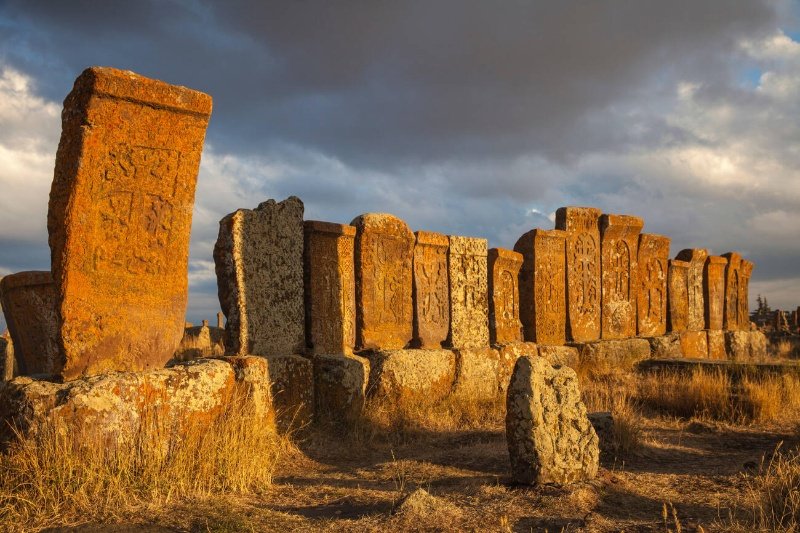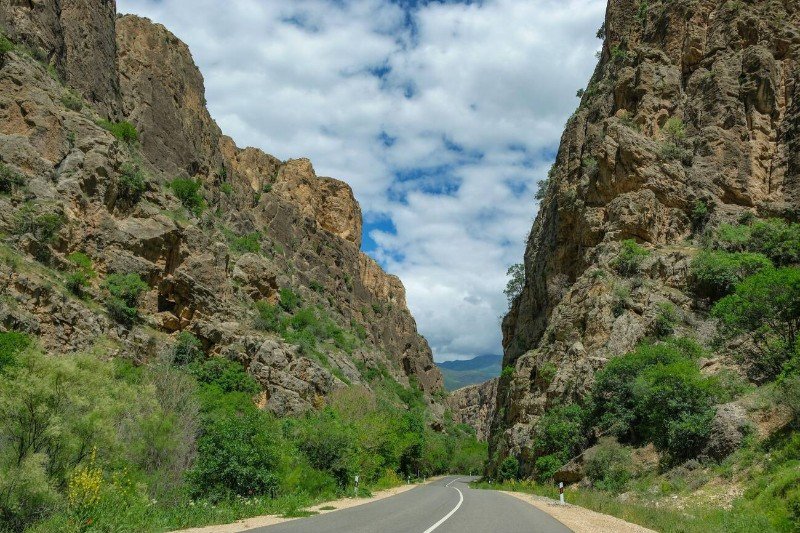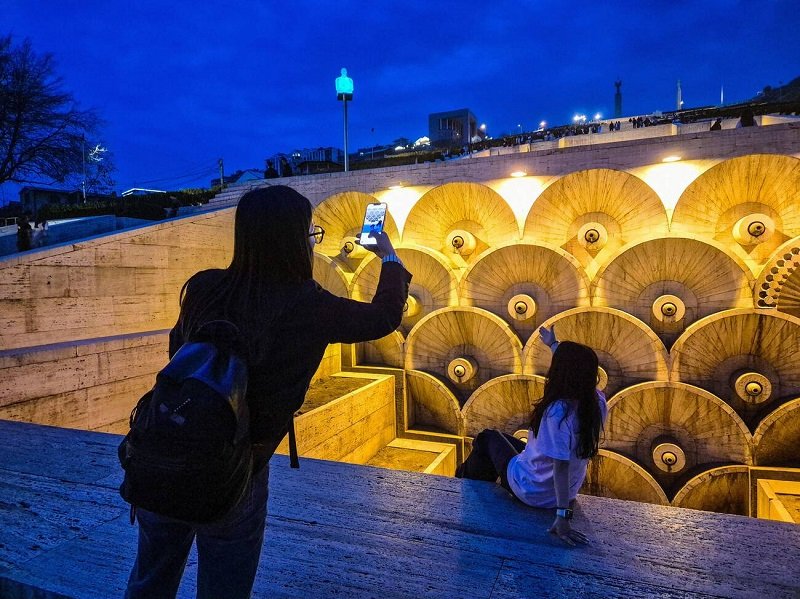Armenian cross stones, known as “Khachkars”, are one of the most distinctive and spiritual expressions of medieval Armenian Christian art. These upright stone slabs, intricately carved with crosses and sacred motifs, serve as both religious monuments and historical records. Originating in the 9th century, khachkars stand as powerful testaments to Armenia’s Christian identity and deep artistic tradition.
According to Armenian architect Rafael Israelyan, khachkars are “the greatest masterpieces of Armenian architecture, equal to the finest buildings.” These stones reflect the spiritual aspirations and craftsmanship of their creators, artists who carved emotion, faith, and memory into volcanic tuff stone.
Follow Armenic Tours to understand more about the history, meaning, and craftsmanship of Armenian cross stones.
The Symbolism Behind Armenian Cross Stones
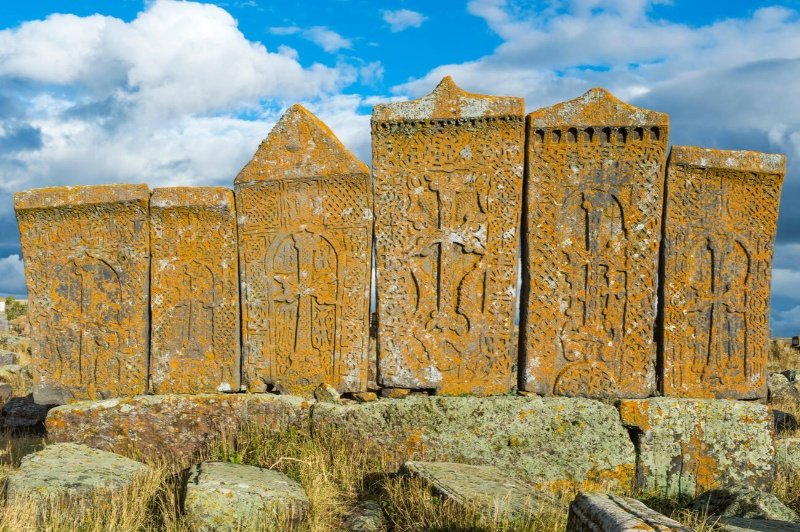
At the center of every khachkar is the cross, symbolizing Jesus Christ’s sacrifice and the hope of eternal life. The surrounding carvings vary, but most include geometric, botanical, and Christian symbols. Two of the most frequent motifs are:
- Pomegranate: Represents life, prosperity, and the Armenian people’s lineage.
- Grapevine: A symbol of divine blessing and the Eucharist.
Each khachkar also features five sacred points:
- Top: The Kingdom of Heaven
- Bottom: The destruction of evil
- Right side: Divine grace
- Left side: Forgiveness of sins
- Center: The ak, or spiritual core of the cross
This structure encapsulates a full theological message, turning the khachkar into more than just a memorial, it becomes a visual sermon.
Historical Roots of the Khachkar
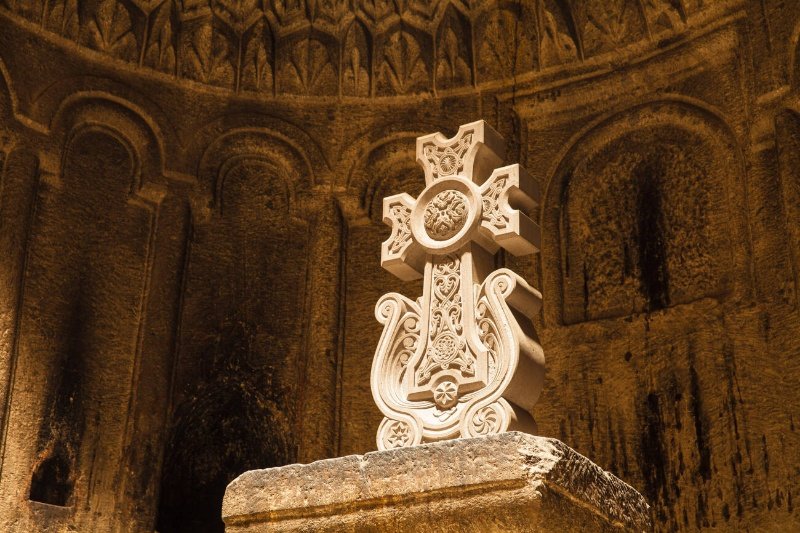
Though the classic Armenian cross stone took shape in the 9th century, its origins trace back to early Christianity in Armenia. Cross symbols were being engraved on church walls as early as the 4th century AD, soon after Armenia became the first nation to adopt Christianity.
The first official khachkar is dated to 879 AD, located in Garni. By the 11th century, khachkars had evolved into tall, rectangular monuments, intricately decorated and entirely unique, no two khachkars are the same.
Artists carved them using reddish-yellow tuff stone, abundant in Armenia. The carvings gradually included floral patterns, saints, eternity symbols, and complex interlace designs, creating a unique theological art form.
Cultural and Religious Role of Armenian Cross Stones
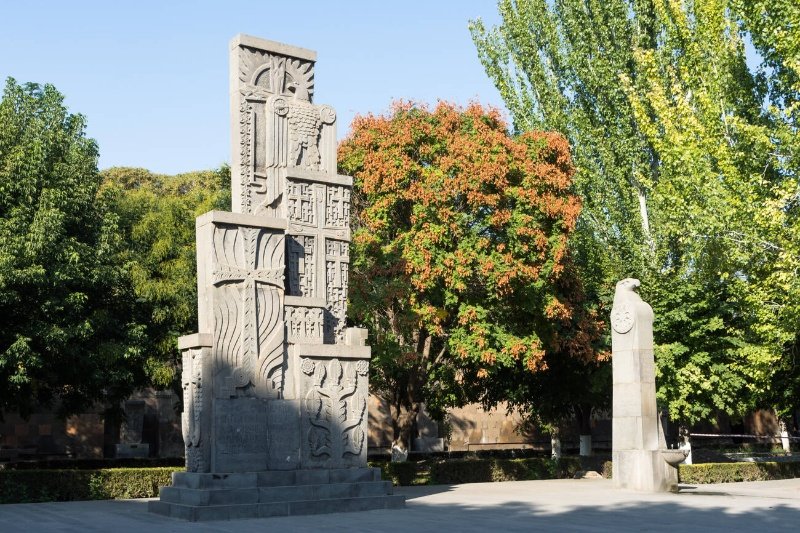
Khachkars are typically erected in:
- Churchyards and monastery walls
- Graveyards and cemeteries
- Public places like bridges, fountains, and roadsides
They commemorate:
- Religious milestones
- Military victories
- Construction of sacred buildings
- Acts of generosity or spiritual pledges
Each khachkar is individually designed by a master craftsman, who selects its decorative style and spiritual meaning. Some include prayers, names of patrons, or dates.
Over centuries, they became a national symbol, reinforcing the Armenian people’s devotion to Christianity and their cultural continuity.
The Amenaprkich Khachkars: Rare Depictions of Christ
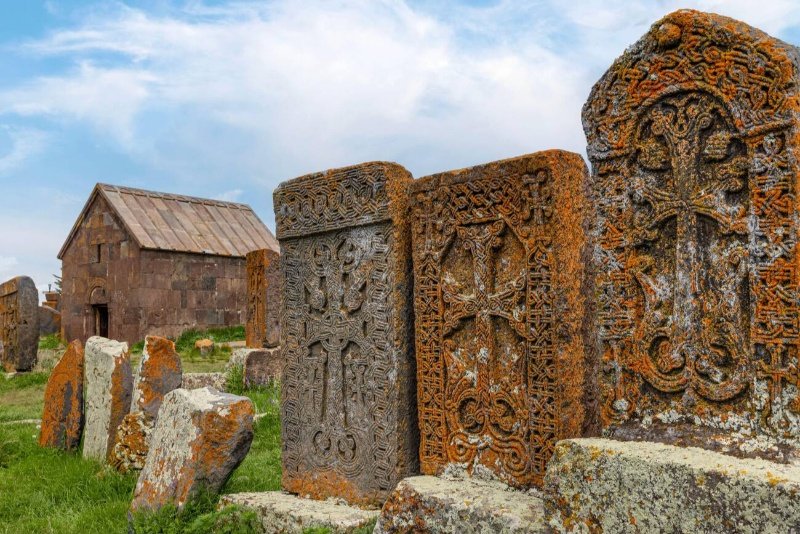
Among thousands of Armenian cross stones, only four are known as Amenaprkich (“Holy Savior”) khachkars. These rare monuments depict Jesus Christ himself, usually showing:
- The Crucifixion
- The Descent from the Cross
These khachkars are believed to have protective or healing powers and were created during a 12-year period in the 13th century:
- The earliest, dated 1273 AD, is in Haghpat.
- Two others are in Etchmiadzin, Armenia’s religious center, one uniquely carved in wood.
- The fourth stands in Dsegh village.
Their artistic and theological depth make them some of the most revered religious monuments in Armenian history.
Noratus: The Largest Field of Armenian Cross Stones
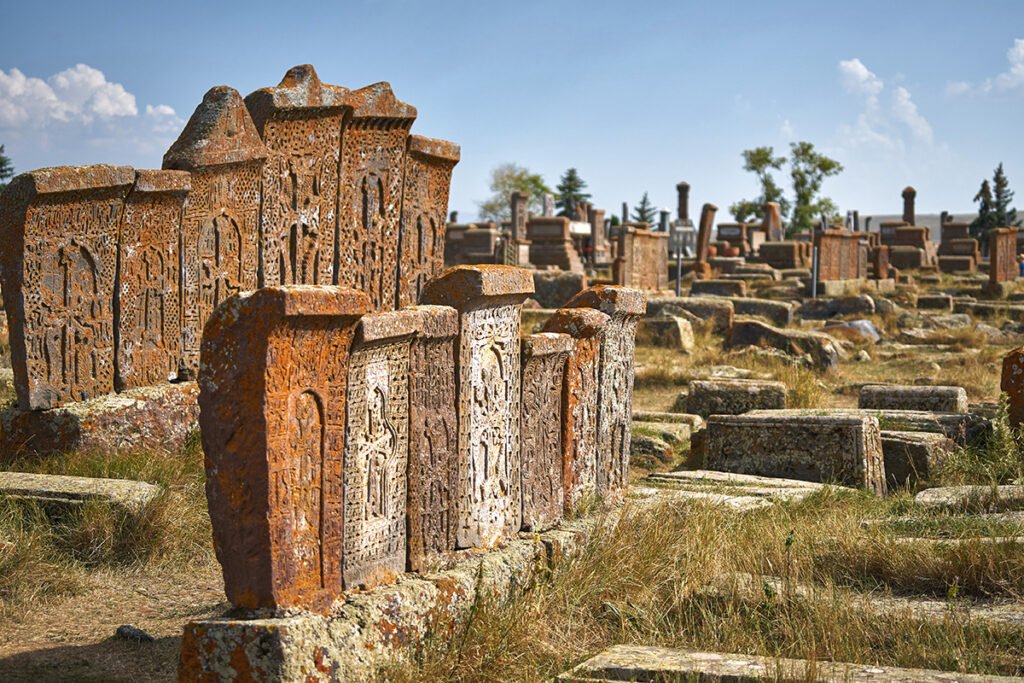
The village of Noratus, located in Gegharkunik Province, is home to the largest surviving collection of Armenian cross stones, around 1,000 in total, most from the 13th to 14th centuries.
According to legend, during a Seljuk invasion, the Armenians dressed the khachkars as soldiers. From a distance, the enemy mistook them for a large army and fled in panic. This legend not only highlights the stones’ spiritual role but also their place in national defense and folklore.
The Lost Khachkars of Old Julfa
Old Julfa, once a thriving Armenian city, was located along the Arax River. By the 17th century, its cemetery held over 10,000 khachkars, many richly adorned with figures of Christ, Mary, and saints.
However, in a devastating act of cultural destruction, Julfa’s khachkars were systematically demolished between 1998 and 2005, under the directive of the Azerbaijani government. The last 3,000 standing stones were bulldozed and thrown into the river.
International outrage followed, and although the original stones are lost, replicas now appear in churches, parks, and museums across Armenia, 20 of them in Gyumri alone. These efforts aim to preserve memory and resist cultural erasure.
The Evolution and Revival of Khachkar Art

Over time, Armenians have carved more than 50,000 khachkars, though many were destroyed during invasions, earthquakes, or neglect. Despite these losses, khachkar art remains active and evolving.
Modern Armenian stonecutters continue the tradition, blending classical motifs with contemporary interpretations. Churches, memorials, and public spaces across Armenia and the diaspora proudly display new khachkars.
In 2010, UNESCO included khachkars in the list of the Intangible Cultural Heritage of Humanity, recognizing their global importance as a form of sacred art.
Conclusion
Armenian cross stones are more than religious monuments. They are living witnesses of faith, artistry, and endurance. Whether standing in silent cemeteries, guarding churches, or replicated in distant cities, khachkars connect the present with centuries of Armenian history.
Through their unique design and sacred symbolism, these stones continue to inspire, educate, and unify. Preserving them is not only a cultural duty for Armenians, it is a gift to the world’s spiritual and artistic heritage.
FAQ
What is an Armenian cross stone
An Armenian cross stone, or khachkar, is a vertical carved monument featuring a cross and symbolic motifs, used to mark graves, churches, or important events in Armenian Christian history.
Why are khachkars important to Armenian culture
Khachkars symbolize faith, memory, and identity. Each stone is uniquely crafted and reflects Armenia’s deep Christian heritage, making them sacred both religiously and culturally.
Where can I see authentic Armenian cross stones today
You can find thousands of khachkars in Armenia, especially in Noratus, Etchmiadzin, and Haghpat, as well as modern replicas in Armenian communities worldwide.


